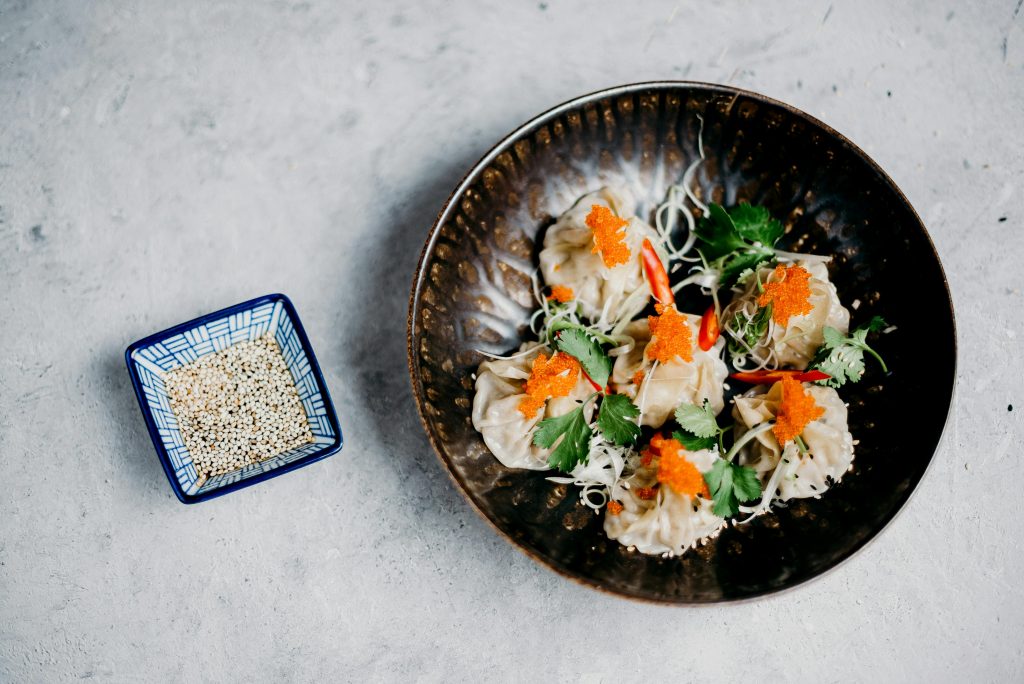
- Understand local preferences and adapt the menu accordingly to ensure diners return repeatedly.
- Ensure compliance with food safety regulations and establish reliable supply chains.
- Prioritize authenticity in the dining experience, from the ambiance to chef expertise, to satisfy customers.
- Embrace technology for online presence, ordering, and delivery services.
- Plan your finances meticulously and incorporate sustainability practices for long-term success.
The allure of Asian cuisine is undeniable. Its vibrant flavors, rich history, and diverse ingredients have captured people’s palates worldwide. If you’ve been contemplating starting an Asian food business, whether it’s a restaurant, food truck, or catering service, you’re stepping into a dynamic and rewarding industry. However, success in this venture requires careful planning and consideration. This article will delve into five crucial considerations to remember when embarking on your journey into the world of Asian cuisine.
1. Understanding Your Target Market
Identifying Preferences
Before launching your Asian food business, it’s vital to understand your target market’s preferences. Asian cuisine encompasses various flavors and styles, ranging from spicy Szechuan dishes to delicate Japanese sushi. Conduct thorough market research to determine which Asian cuisines are most popular in your area. Consider factors such as demographics, cultural influences, and existing competitors.
Adapting to Local Tastes
While authenticity is essential in Asian cuisine, don’t hesitate to adapt your menu to suit local tastes. For instance, if you’re planning to serve Chinese cuisine in the Philippines, incorporating local ingredients or flavors can enhance the appeal of your dishes. For example, incorporating high-quality sesame oil in the Philippines can add a unique twist to traditional Chinese recipes, appealing to Filipino palates while maintaining the essence of the cuisine.
2. Navigating Food Safety Regulations
Compliance is Key
Food safety regulations are stringent and vary depending on your location. Familiarize yourself with the local health codes and regulations governing food preparation, storage, and handling. Ensure that your kitchen facilities meet all sanitary requirements and invest in proper training for your staff to uphold hygiene standards.
Supply Chain Considerations
When sourcing ingredients, prioritize quality and safety. Establish relationships with reputable suppliers who adhere to food safety standards and provide fresh, high-quality products. Regularly inspect your ingredients and implement strict inventory management practices to prevent contamination or spoilage.
3. Creating an Authentic Dining Experience
Attention to Detail
Authenticity is the cornerstone of a successful Asian food business. Pay meticulous attention to every aspect of the dining experience, from the ambiance of your establishment to the presentation of your dishes. Incorporate traditional Asian decor elements, such as lanterns or bamboo accents, to create an immersive environment for your customers.
Chef Expertise
Hiring a skilled chef with expertise in Asian cuisine is essential for maintaining authenticity and ensuring the quality of your dishes. Look for candidates with a deep understanding of Asian cooking techniques and a passion for experimenting with flavors. Encourage creativity while staying true to the roots of the cuisine.

4. Embracing Technology
Online Presence
In today’s digital age, establishing a strong online presence is paramount for any business. Create a professional website showcasing your menu, location, and contact information. Use social media platforms like Instagram and Facebook to connect with potential customers, announce promotions or events, and share enticing food photos.
Online Ordering and Delivery
Offering online ordering and delivery services can significantly expand your customer base and revenue streams. Partner with third-party delivery platforms or develop your ordering app to streamline the process. Ensure timely delivery and maintain the quality of your food, as positive online reviews can significantly impact your business’s reputation.
5. Financial Planning and Sustainability
Budgeting
Starting an Asian food business requires careful financial planning to cover initial expenses such as lease payments, equipment purchases, and staffing costs. Create a detailed budget outlining your projected expenses and revenue streams. Consider factors such as seasonal fluctuations, marketing expenses, and contingencies for unexpected costs.
Sustainability Practices
Implementing sustainable practices benefits the environment and appeals to environmentally conscious consumers. Explore options for eco-friendly packaging, energy-efficient appliances, and waste-reduction strategies. Educate your staff and customers about your sustainability initiatives to build a positive brand image and contribute to a greener future.
Embarking on the journey of starting an Asian food business is both exciting and challenging. By carefully considering factors such as understanding your target market, navigating food safety regulations, creating an authentic dining experience, embracing technology, and implementing financial planning and sustainability practices, you can set yourself up for success in this dynamic industry. Remember, passion for Asian cuisine, coupled with diligent planning and execution, is the recipe for a thriving business in the world of gastronomy.